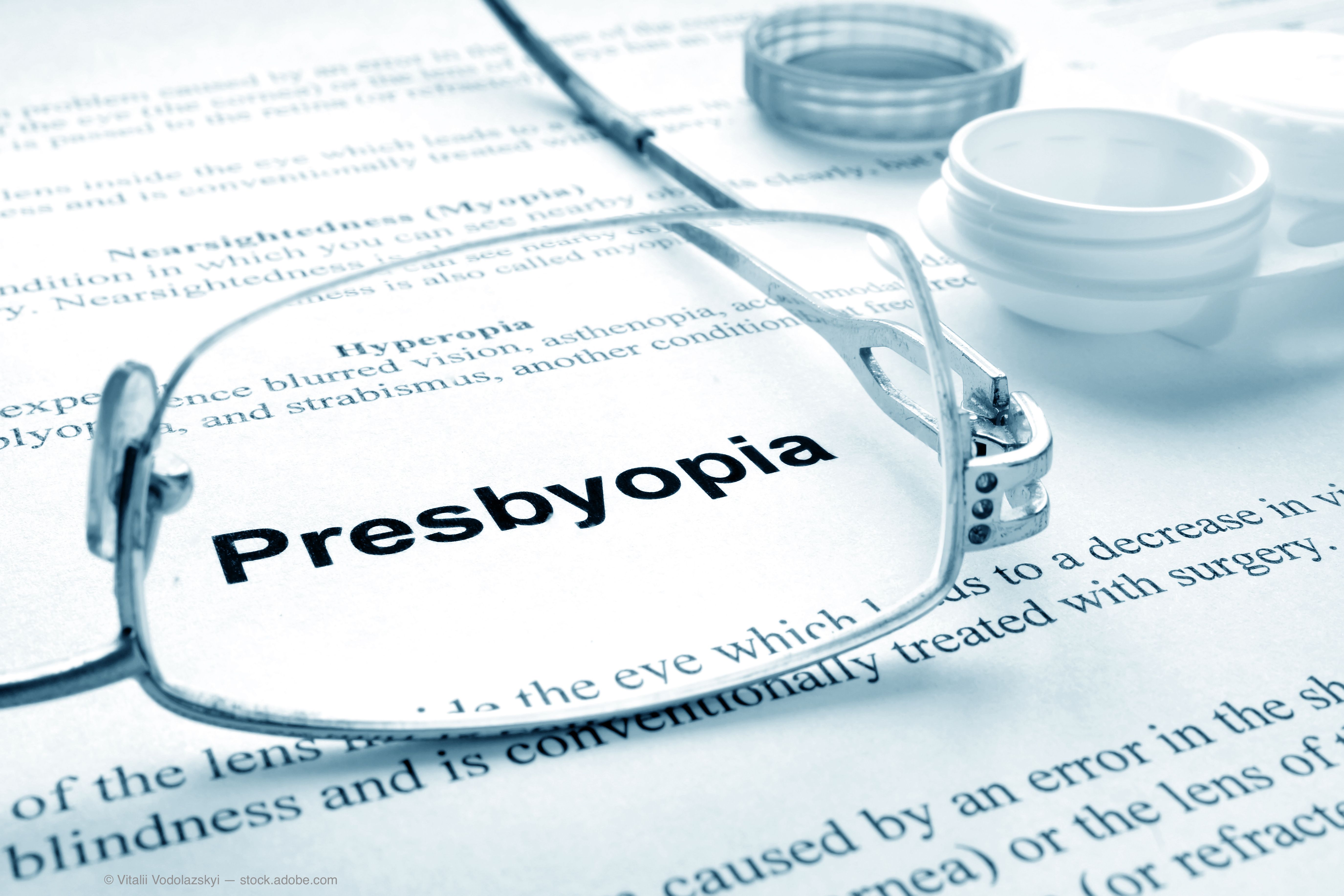Is presbyopia the newest subspecialty?
A look at the current and future landscape of treatment options for this age-related condition.
Article reviewed by Karolinne Maia Rocha, MD, PhD
The presbyopia landscape is crowded today with innovations to treat this condition, including corneal procedures, pharmacologic treatments, scleral procedures, and phakic and intraocular (IOL) lenses, according to Karolinne Maia Rocha, MD, PhD, director of cornea and refractive surgery at the Medical University of South Carolina in Charleston.

Corneal procedures
Procedures that are coming down the pike include focal denaturization of collagen fibers that involves use of a femtosecond laser to change the corneal refractive index (laser-induced refractive index change).
Another option is lenticular intrastromal keratoplasty, which uses a precut, donor stromal lenticule that is inserted either under a femtosecond flap or in a pocket.
Corneal inlays/onlays, presbyopic excimer laser ablation profiles, and modified monovision are also available.
Crystalline lens photodisruption
The femtosecond laser pulses may soften the presbyopic crystalline lens and restore accommodation.
Pharmacologic therapies
Small aperture optics or the pinhole effect can be achieved by pupil modulation induced pharmacologically. Liquid Vision eye drops (Presbyopia Therapies), CSF-1 ophthalmic solution (Orasis Pharmaceuticals), AGN-190584 (Vuity; Allergan, an AbbVie company), and FOV Tears (developed by Colombian researcher Felipe Vejarano).
Rocha said she is excited by the prospect of a smaller aperture can improve the depth of focus.
“A pinhole placed in front of the eye can restrict the peripheral vision,” she said. “However, the advantage is that when the pinhole is ‘placed’ at the iris plane, the depth of focus is extended without restricting the peripheral vision.”
The so-called “sweet spot” regarding the size of the natural pupil with constriction may be a range 40% to 50% of the natural pupil size to achieve extended depth of focus without compromising the distance vision, she said.
Evaluating this approach in the phase 3 GEMINI 1 clinical trial using AGN-190584 showed that the study patients gained 3 lines of vision 6 hours after drop instillation at day 30.
The peak drug effect was at 1 hour after instillation, but the change remained for up to 24 hours.
Other presbyopic approaches include decreasing the lens stiffness and restoring lens elasticity with EV06 (Novartis) and Vision Correction (NanoDrops) causes a change in the refractive index.
Scleral procedures
The laser scleral microporation (LSMTM) procedure is performed in 4 quadrants for less than 8 seconds in each quadrant to uncross-link the scleral myofibrils, thereby restoring the mechanical efficiency of the natural accommodative mechanism and improving biomechanical mobility to achieve accommodative power, Rocha said.
Intraocular lenses
Several IOL designs are available to treat presbyopia at the time of lens surgery, ie, accommodative, extended-depth-of-focus, small aperture, and multifocal IOLs.
In addition, another procedure, refractive index shaping, will be able to modify monofocal acrylic IOLs to address presbyopia.
“In the future, we will be able to use the femtosecond laser for refractive index shaping, in which [the] laser is applied to an acrylic IOL that selectively changes the polarity and the refractive index,” Rocha said. “This procedure facilitates creation of 3-dimensional structures within an IOL. This takes an acrylic monofocal IOL to a multifocal IOL and vice versa.”
Rocha said she looks forward to a new level of future patient simulation, whereby patients can actually experience the real world through multifocal correction before IOLs are implanted or contact lenses are fitted to facilitate the optimal correction for them.
See more presbyopia coverage
--
Karolinne Maia Rocha, MD, PhD
E: karolinnemaia@gmail.com
This article is adapted from Rocha’s presentation at the virtual Real World Ophthalmology meeting. She is a consultant to J&J Vision, Bausch + Lomb, Allergan, Alcon, OysterPoint, LaserACE, Dompe, and Carl Zeiss Meditec.
Newsletter
Want more insights like this? Subscribe to Optometry Times and get clinical pearls and practice tips delivered straight to your inbox.